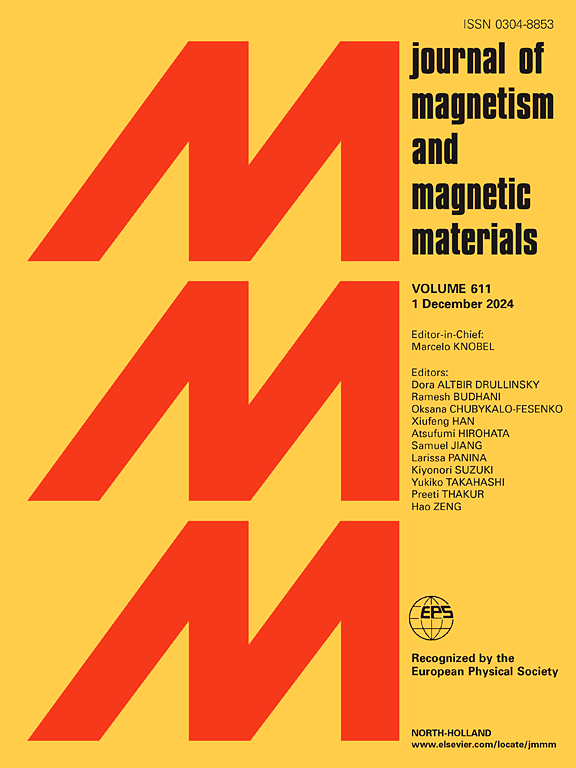考虑开磁场装置的全磁热疗模型优化方法
IF 2.5
3区 材料科学
Q3 MATERIALS SCIENCE, MULTIDISCIPLINARY
引用次数: 0
摘要
磁热疗通过将肿瘤组织的温度升高到某一特定值来破坏肿瘤组织,相对于其他传统治疗方法,磁热疗具有安全性,是目前最受欢迎的治疗方法之一。根据Rosensweig的理论,具有纳米级尺寸的磁性纳米颗粒(MNPs)在受到交变磁场的作用时可以为生物组织释放热量。以往的报道主要集中在相对封闭空间内的磁场,但这通常对较大体积目标的放置有一定的限制,并且会由于内部空间的增加而导致磁场分布的不均匀。本研究建立了一种开放磁场的磁热疗装置,并通过简单大鼠模型对其治疗效果进行评价。此外,还考虑了平面线圈的半径,并引入了可调参数的PID控制器,对该装置进行了优化。利用有限元法求解相应的偏微分方程,得到平面线圈的磁场剖面与生物组织的温度场分布进行了顺序耦合。结果表明,环形多的平面线圈在一定程度上优于环形少的平面线圈。此外,所提出的PID控制器可以通过减少治疗过程中时空温度的设定时间和超调量来改善恶性组织的热损伤。本文章由计算机程序翻译,如有差异,请以英文原文为准。
Optimization approach for complete magnetic hyperthermia model considering open magnetic field device
Magnetic hyperthermia damages malignant tissue by the temperature elevation to a specific value, which is one of most popular treatment methods due to its safety with respect to other traditional ways. Magnetic nanoparticles (MNPs) with nanoscale size release the heat for bio-tissue according to Rosensweig’ theory when subjected to an alternating magnetic field. Previous reports mainly focused on the magnetic field in a relatively enclosed space, which however generally has some limitation on the placement of larger volume target and can lead to the inhomogeneous distribution due to the increase of internal space. This study establishes an open magnetic field device for magnetic hyperthermia, which is evaluated by the treatment effect of a simple rat model. Further, this device is also optimized by considering the radius of planar coil and by introducing a PID controller with adjusted parameters. After using finite element method for corresponding partial differential equations, the magnetic field profile for the proposed planar coil obtained is sequentially coupled with the temperature field distribution of biological tissue. The results demonstrate that the planar coil with more rings can result in a better scenario for magnetic hyperthermia with respect to less rings case to some extent. In addition, the proposed PID controller can be used to improve the thermal damage of malignant tissue by decreasing both the setting time and the overshoot for spatiotemporal temperature during therapy.
求助全文
通过发布文献求助,成功后即可免费获取论文全文。
去求助
来源期刊

Journal of Magnetism and Magnetic Materials
物理-材料科学:综合
CiteScore
5.30
自引率
11.10%
发文量
1149
审稿时长
59 days
期刊介绍:
The Journal of Magnetism and Magnetic Materials provides an important forum for the disclosure and discussion of original contributions covering the whole spectrum of topics, from basic magnetism to the technology and applications of magnetic materials. The journal encourages greater interaction between the basic and applied sub-disciplines of magnetism with comprehensive review articles, in addition to full-length contributions. In addition, other categories of contributions are welcome, including Critical Focused issues, Current Perspectives and Outreach to the General Public.
Main Categories:
Full-length articles:
Technically original research documents that report results of value to the communities that comprise the journal audience. The link between chemical, structural and microstructural properties on the one hand and magnetic properties on the other hand are encouraged.
In addition to general topics covering all areas of magnetism and magnetic materials, the full-length articles also include three sub-sections, focusing on Nanomagnetism, Spintronics and Applications.
The sub-section on Nanomagnetism contains articles on magnetic nanoparticles, nanowires, thin films, 2D materials and other nanoscale magnetic materials and their applications.
The sub-section on Spintronics contains articles on magnetoresistance, magnetoimpedance, magneto-optical phenomena, Micro-Electro-Mechanical Systems (MEMS), and other topics related to spin current control and magneto-transport phenomena. The sub-section on Applications display papers that focus on applications of magnetic materials. The applications need to show a connection to magnetism.
Review articles:
Review articles organize, clarify, and summarize existing major works in the areas covered by the Journal and provide comprehensive citations to the full spectrum of relevant literature.
 求助内容:
求助内容: 应助结果提醒方式:
应助结果提醒方式:


